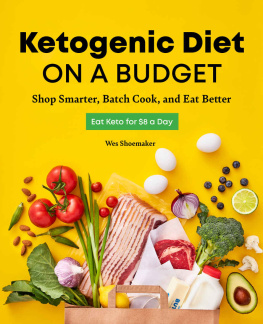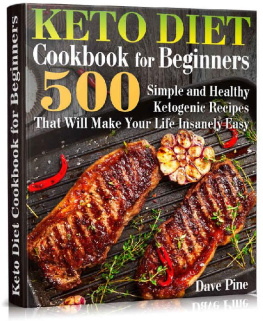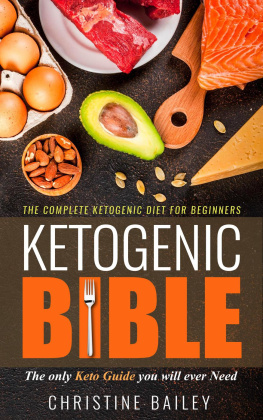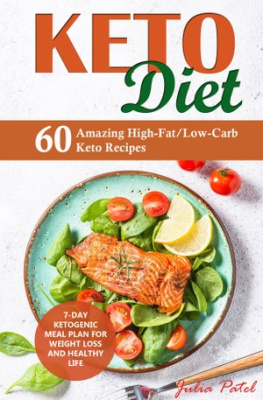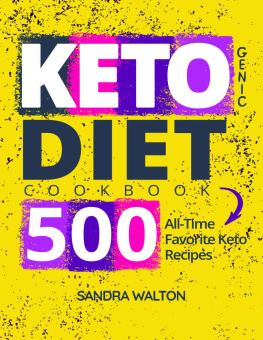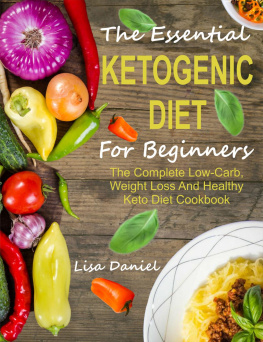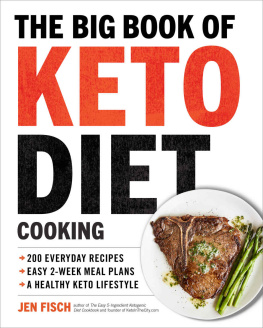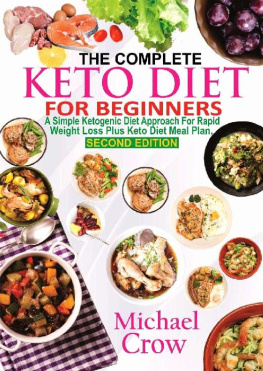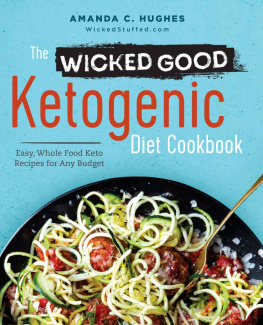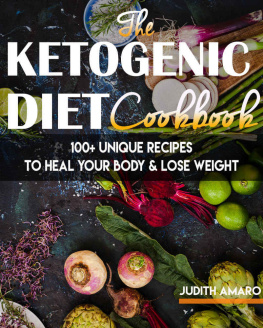

Copyright 2021 by Rockridge Press, Emeryville, California
No part of this publication may be reproduced, stored in a retrieval system, or transmitted in any form or by any means, electronic, mechanical, photocopying, recording, scanning, or otherwise, except as permitted under Sections 107 or 108 of the 1976 United States Copyright Act, without the prior written permission of the Publisher. Requests to the Publisher for permission should be addressed to the Permissions Department, Rockridge Press, 6005 Shellmound Street, Suite 175, Emeryville, CA 94608.
Limit of Liability/Disclaimer of Warranty: The Publisher and the author make no representations or warranties with respect to the accuracy or completeness of the contents of this work and specifically disclaim all warranties, including without limitation warranties of fitness for a particular purpose. No warranty may be created or extended by sales or promotional materials. The advice and strategies contained herein may not be suitable for every situation. This work is sold with the understanding that the Publisher is not engaged in rendering medical, legal, or other professional advice or services. If professional assistance is required, the services of a competent professional person should be sought. Neither the Publisher nor the author shall be liable for damages arising herefrom. The fact that an individual, organization, or website is referred to in this work as a citation and/or potential source of further information does not mean that the author or the Publisher endorses the information the individual, organization, or website may provide or recommendations they/it may make. Further, readers should be aware that websites listed in this work may have changed or disappeared between when this work was written and when it is read.
For general information on our other products and services or to obtain technical support, please contact our Customer Care Department within the United States at (866) 744-2665, or outside the United States at (510) 253-0500.
Rockridge Press publishes its books in a variety of electronic and print formats. Some content that appears in print may not be available in electronic books, and vice versa.
TRADEMARKS: Rockridge Press and the Rockridge Press logo are trademarks or registered trademarks of Callisto Media Inc. and/or its affiliates, in the United States and other countries, and may not be used without written permission. All other trademarks are the property of their respective owners. Rockridge Press is not associated with any product or vendor mentioned in this book.
Interior and Designer: Rachel Haeseker
Art Producer: Meg Baggott
Editor: Marjorie DeWitt
Production Editor: Andrew Yackira
Photography 2021 Kate Sears. Food styling by Lori Powell.
courtesy of Irvin Rivera / graphicsmetropolis.
ISBN: Print 978-1-64611-206-7
eBook 978-1-64611-207-4
R0
To Joshua, for being my taste tester for the last 25 yearsand
my biggest cheerleader when I couldnt cheer for myself.
Contents

Several years ago, when I started my keto journey, I created a YouTube channel called Highfalutin Low Carb as a way to share recipes and ideas. It quickly grew into an amazing community of keto and low-carb eaters helping each other stay committed. My most popular videos are Recipe Battles, where I make and test several keto recipes for a particular food (keto bread or keto cinnamon rolls, for instance) and determine a winner. With almost half a million social media followers at the time of this publication, one recurring comment I receive is a variation of: Thank you for saving me time and money. I waste so many expensive ingredients making recipes that turn out poorly, so now I always check your channel first.
With that in mind, I set out to create a cookbook full of deliciously nourishing keto recipes that wont break the bank. Many keto recipes in cookbooks and online are full of unusual or expensive ingredients that might be rarely used or dont give the results promised. Theres no need to waste time and money to eat a healthy ketogenic diet. The recipes in this book are delicious, easy, and affordable. This book will help you expand your palate and gain a solid understanding of the keto diet while using readily available ingredients you can find at any grocery store. Eating a ketogenic diet doesnt mean we have to spend a fortune; we just need to be smart about selecting recipes and ingredients.
Daily, I hear from followers who have struggled with starting, or sticking to, a keto diet. I have often felt that way myself, but I also know the tremendous rewards a ketogenic diet can bring. By sharing some tips and strategies, Im hopeful that I can make this an easy and affordable journey for you and your family. Together we will meet our dietary goalswhether thats weight loss, improved health, decreased inflammation, or all of the above. Im glad youre here. Lets get started!

Whether youre new to the ketogenic diet or a seasoned keto eater searching for budget-friendly recipes, the basics in this chapter will set you on a course for nutritional success. There are a few key elements to the keto way of eating that are essential to understand and remember if you want to feel great while losing weight or keeping the pounds off. Lets explore these points a bit further.
Why the Keto Diet Works (Even on a Budget)
By learning the ketogenic diets core principles, youll better understand how to manipulate the daily macronutrients (macros) that you eat. Everything humans eat can be calculated into three main categories of macros: carbohydrates, proteins, and fats. Understanding how your body responds to each is the key to successfully navigating the ketogenic diet.
The Standard American Diet (typical Western diet) generally consists of around 2,000 calories a day, with 50 percent of those calories coming from carbohydrates, 15 percent from proteins, and 35 percent from fats. Scientists and nutritionists have told us for years that to lose weight and eat healthy, most of our diet should consist of complex carbohydrates and minimal fat. Modern scientific studies (and the increasing waist sizes and metabolic diseases rampant in Western society) now show us that, as a population, weve been eating too many carbs.
The ketogenic diet turns that old way of thinking about healthy nutrition on its head. Instead of getting most of your calories from carbswhich your body breaks down into glucose that you use as fuela keto diet uses fat as the main source of energy. In a typical ketogenic diet, the macros should be around 70 percent fat, 20 percent protein, and a mere 5 percent carbs. This means that instead of burning glucose for energy, you will now be burning fat through the process of ketosis. When you restrict your carb intake this much (and in turn your glucose), your body manufactures ketones to use as an energy source. When it does, you enter a healthy state of nutritional ketosis, which has countless benefits youve probably already heard about and are here to experience yourself: weight loss; mental clarity; management of inflammation, insulin sensitivity, and autoimmune disorders; and many others we will explore.
Next page
